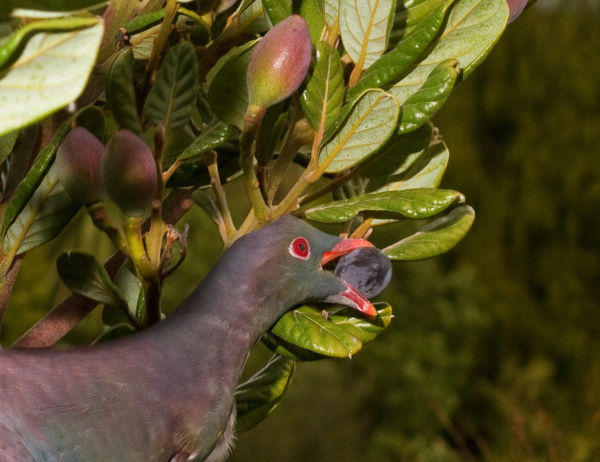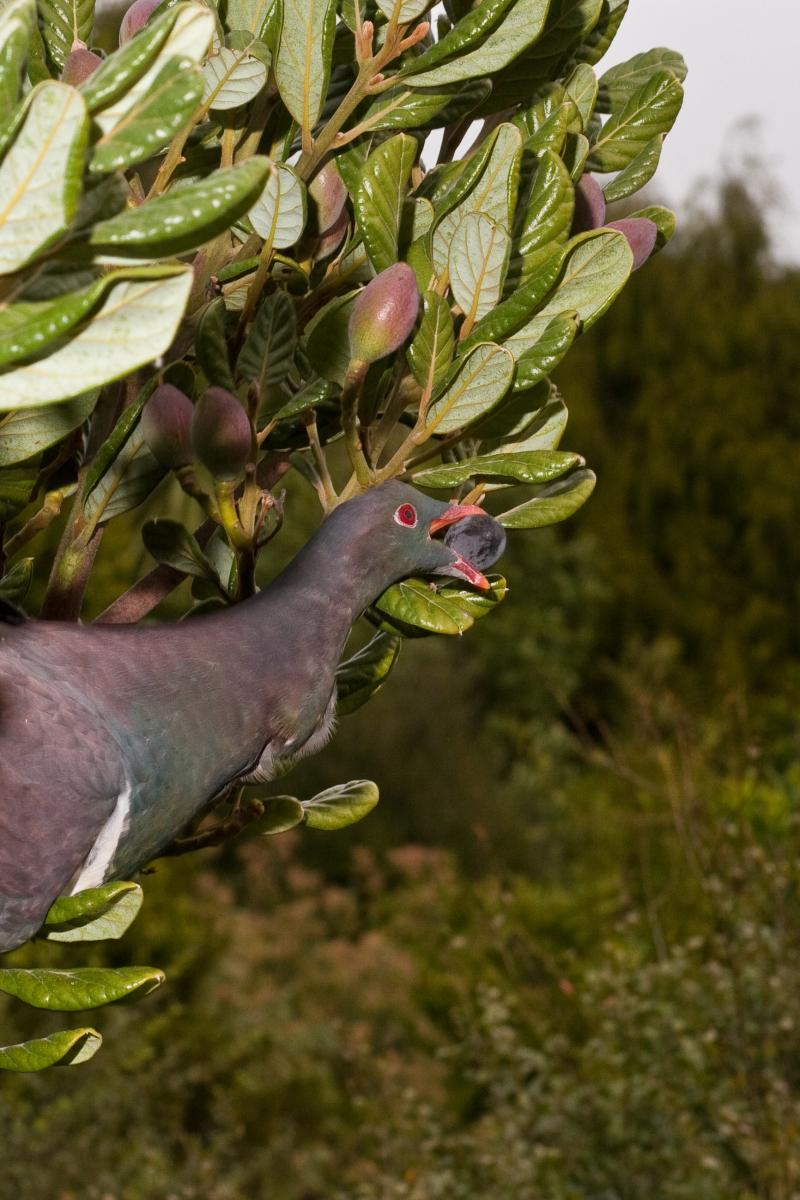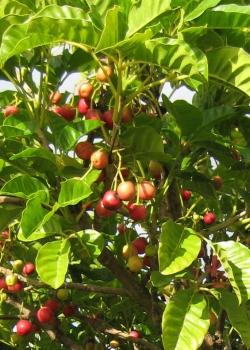Kererū II
0
Overview
Using this Resource
Connecting to the Curriculum
Marking Student Responses
Working with Students
Further Resources
This task is about using what we know about kererū's adaptations to help us decide on actions to help the species survive.


The gape of a bird is how wide it can open its beak.
Native trees such as karaka, tawa and taraire produce large fruit.
Kererū are now the only native birds whose gape is wide enough to swallow whole the fruits of karaka, tawa and taraire.
They are therefore very important for spreading the seeds of these trees so new trees grow.
Task administration:
This task can be completed with pencil and paper or online.
Copyright:
 I
I
Image: (c) Nga Manu Images.

(c) www.photokete.co.nz
All images copyright to PhotoKete are used under a commercial license and can be freely used for educational purposes.
All images copyright to PhotoKete are used under a commercial license and can be freely used for educational purposes.
Level:
5
Curriculum info:
Key Competencies:
Keywords:
Description of task:
Task: Identify how the kererū's adaptations contribute to its interactions with its ecosystem, and how knowing about kererū's' adaptations can benefit both it and people. Assessment focus: using understandings about adaptations to consider actions affecting the kererū.
Curriculum Links:
Science capabilities
The capabilities focus is brought about by the conversations you have and the questions you ask.
Capability: Use evidence
This resource provides opportunities to discuss using evidence to support an explanation.
Capability: Engage with science
This resource provides opportunities to discuss a real life issue and an action to take.
Science capabilities:
Answers/responses:
| What to look for | Y10 (04/2016) | |
| a) | Kererū get thirsty when they are full of berries. | moderate |
| b) i) |
Short term changes: Responses that focus on there being more berries, or the dispersal of the seeds/berries.
Long term changes: Responses that relate to the diversity of the bush.
|
easy |
| ii) |
Responses that refer to the wide gape, or they can open their beaks wide enough to swallow the seed/ whole berry. Example:
This is because the kererū has a large enough mouth to eat the berries from the tree and spread the seeds around the NZ bush. But if they became extinct the seeds would not be spread around.
|
moderate |
| c) i) | Any suggestion that would provide some protection for kererū (e.g., set up sanctuaries, prevent killing, control of predators, planting appropriate trees, research). | very easy |
| ii) | Any evidence that supports their suggestion. | moderate |
Results based on an online sample of 40 Y10 students.
Diagnostic and formative information:
Based on responses from an online sample of 40 Y10 students.
| Question | Students' responses | Next steps |
| a) Which observation was used when (Māori) designed the waka kererū? |
1/4 of the trial students chose the option "Kererū are big birds". Maybe the size of the birds was taken into account when designing the trap, but it would not have been the most important idea in the overall concept.
About 1/6 chose the option "When there is less food around kererū are more energetic".
|
|
| c) ii) Use evidence to justify your idea. |
Only two students used evidence from the resource.
It said a couple slides back that kererū are trapped and die. If they were protected in a wildlife sanctuary then it would be easier for them to live freely and breed, which means the population would increase.
The others who completed this question called on their own background knowledge, which generally did provide a justification for their suggestion. However, most did not reference it back to any examples. In some cases the evidence used could be regarded as opinion, and in a few cases was irrelevant or incorrect.
An example from a student who did refer to a specific example was:
Zealandia has kererū and they are protected there.
|
Justifications in science require evidence. Encourage students to ask and answer questions such as:
|
For more ideas, go to Science Capability 2: Using evidence.
Inferring (Science capability 1: Gather and interpret data)
| Question | Students' responses | Next steps |
| b) i) If there were no longer any kererū, how might the New Zealand bush be affected? |
There would be more berries because there would be less eaten. (short term)
Fewer berry trees (long term)
The fruit of the trees that the kererū use as a food source would not thrive as much. The fruit of the trees would not get eaten and distributed by the kererū, instead they would stay by he ground close to their trees and rot.
|
|
| b) ii) Use what you know about the kererū's adaptations to explain why you think this. |
Many students repeated information, without making links to the adaptation. Instead of identifying the gape as the adaptation, they discussed what the kererū does.
The kererū eat the berries and poop the seeds out later and kinda plant more trees.
|
For the answers that focus on behaviour, ask students to identify what feature of the kererū enables it to spread the seeeds. |
The types of responses given by the trial students are shown, from the most common to the least common. There is some overlapping, e.g., "sanctuaries" encompasses some of the other categories.
- Protect from humans and Provide sanctuaries
- Protect from predators
- Protect/replant habitat
- Research programmes to find out how best to help them
- Breeding programmes
Next steps:
Key competencies: Thinking
This task provides opportunities for students to think at a “systems level”, an important skill to science and the environment.
Before they can begin to consider how a particular action or event will affect a system they need some understanding of the individual parts of that system. Kererū, the native bush, the trees with large berries, people, and introduced predators could be regarded as parts of a system in this context.
Discussing "what might happen if" particular scenarios are played out can support students to start developing systems thinking. Students need to think about the scenarios both immediately and into the future,
Discussing "what might happen if" particular scenarios are played out can support students to start developing systems thinking. Students need to think about the scenarios both immediately and into the future,
Provide opportunities to discuss "what if" questions in a variety of contexts.
The following articles from ARB research may be helpful to teachers
- Inter-relationships - a really important idea in environmental science
- Common alternative ideas about inter-relationships
Other Level 5 ARB resources that have an interdependence focus are:

